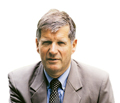Vol. 233 No. 12
OIL AND GAS IN THE CAPITALS
|
DR. ØYSTEIN NORENG, CONTRIBUTING EDITOR, NORTH SEA
|
Is Europe moving from
Green to Gas?
|

|
The ambitious European Union (EU) energy policy that aims to cut most of the region’s fossil fuel usage and greenhouse gas emissions by 2050 is being challenged by realities. The policy, published in early 2011, focuses on efficiency gains and clean technologies. Economic constraints got less attention. They are now knocking on the door, possibly knocking down much of the green energy policy. Less than two years since its publication, the EU’s green energy policy appears more costly than an-ticipated, less effective, and detrimental to industrial competitiveness. Moreover, it appears that some of the policies initiated are environmentally harmful, as the law of unintended consequences applies to measures that are ill-prepared.
Europe already has the world’s most efficient use of energy, exceeding Japan, as compared to economic output, meaning that the easy part of energy conservation has already been carried out. More efficient energy usage normally requires investment. Electric and hybrid cars are costly. Public transportation systems are capital-intensive to build and expensive to operate. Renewable energy is not competitive. It requires government subsidies, as well as protection in the marketplace.
In brief, green technologies are less mature than expected and, therefore, require more protection and subsidies than projected. This is certainly the case for solar and wind power, the hopefuls that need protection and cash to grow up and become competitive. Moreover, the hopefuls have so far proven to be less reliable than the promoters had hoped for. Huge output variations cause infrastructure bottlenecks and corresponding investment requirements for supply to meet demand.
Cost problems. The EU’s energy roadmap was hardly based on any cost-benefit analysis. Costs have not been presented, and there is equal silence on such key points as economic growth, industry structure and employment. It is, indeed, unclear what kind of European economy the Commission envisages for 2020 and 2050. Nevertheless, the vision is policy, but EU energy policy seems to be based on wishful thinking and a lack of realism, detached from the real economy. It expects more profound structural change in energy use from 2010 to 2050 than what took place from 1970 to 2010, when oil and natural gas prices rose eight-fold, adjusted for inflation, without considering costs or the competiveness of European industry. According to the vision of the European Commission, there will hardly be a need for more natural gas, not even from the Barents Sea. Eventually, the development of shale gas in Central Europe, e.g. in Poland, would further limit that market. Since the European Commission presented its roadmap in the winter of 2011, the Fukushima nuclear catastrophe occurred in Japan. It prompted Germany to decide to phase out nuclear power by 2022. In Europe, the trend is to replace nuclear power with coal, contrary to the green goals.
At a time when most European governments are preoccupied with budget balances and employment, subsidies for renewable energy sources are easy prey. Indeed, it seems that Europe’s honeymoon with solar and wind power is over.
The EU green energy policy seems to ignore the systemic distortion of wind and solar to overall energy supply. Because of variability, sun and wind power have low load factors and, therefore, need protection and subsidies to overcome high capital costs. Because variable costs are low, sun and wind power, at times, outcompete conventional thermal power, based on coal and natural gas, compromising their economics and investment, and threatening closures. Thus, the EU green energy policy’s effect could be less, not more power generation capacity, at higher costs and higher consumer prices.
Effects on growth. The implicit signal may be that the European Commission prepares for zero economic growth and stagnation similar to that of Japan, with a declining, aging population that works less, consumes less and pollutes less, but with higher unemployment and more acute social tensions. Politically, this is hardly acceptable. Prospects are that the European economy will continue a gradual development toward more services, higher energy efficiency and less pollution.
The risk is that expectations and rhetoric about efficiency and renewable energy will divert attention from real problems until a supply crisis occurs. The EU might, in energy policy, emulate the U.S., where constant rhetoric about energy independence has been a smokescreen for political inaction. The U.S. progress toward greater self-sufficiency has been prompted by market forces, not by politics.
European industry needs energy, not the least being gas at competitive costs, so that it does not relocate. For the chemical industry, especially, North America offers more favorable conditions. Late 2012 gas prices are three times as high in Germany as in the U.S., eroding German industrial competitiveness. In the second week of November 2012, only 7% of German solar and wind capacity was actually fed into the system. Prospects are that power prices will increase by 50%, further compromising industrial competitiveness. This is hardly sustainable.
Instead of a profound energy change, the likelihood is that the European economy will continue slowly along a path of energy efficiency and emission reduction, and that natural gas will gain EU energy market share. For this purpose, Europe needs to get its house in order. Europe is surrounded by natural gas. Diversified supplies to a common pool of users would enhance security of supply, making natural gas even more attractive. In such a context, natural gas from Norway and Russia could, over time, constitute a backbone for the EU natural gas market. 
|
ONORENG@ONLINE.NO / Øystein Noreng is a professor at BI Norwegian School of Management. He has been an advisor or consultant to the International Monetary Fund; The World Bank; the governments of Denmark, Norway, Sweden, Canada and the U.S.; and energy companies, including Statoil, PDVSA and Saudi Aramco.
|
|
|




